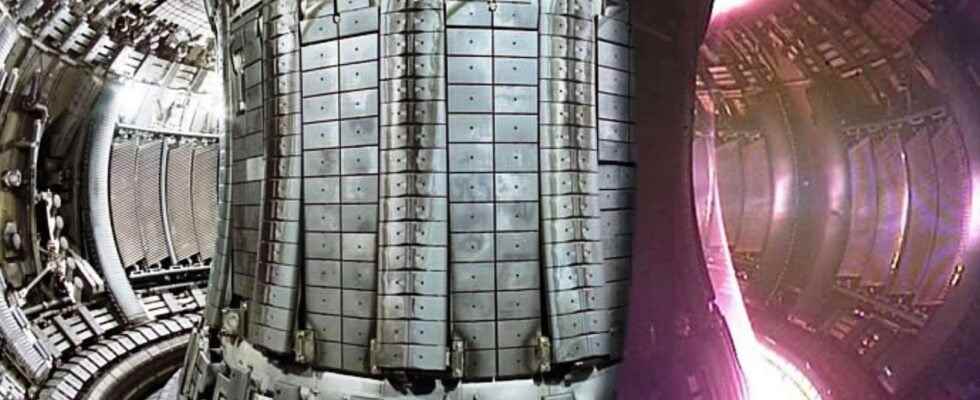The fusion controlled is one of the dreams pursued by physicists. It is not only a question of reproducing on Earth the reactions of thermonuclear fusion that make the stars shine, which we already know how to do with the H bomb or as an accelerator, but above all to control these reactions to produceenergy. If we succeeded, for example, in reproducing in a stable manner the reactions of fusion of deuterium with tritium, two isotopes of the’hydrogen, we would have almost clean and virtually inexhaustible energy. There are basically two ways to do this.
- The first is the one at the base of the project Iter. The idea is to maintain a low density plasma at a very high temperature for a relatively long time, of the order of a second. For this, we must mobilize intense magnetic fields inside a toric cavity: this is fusion by confinement or else magnetic fusion. We know how to ignite the fusion reaction, but the plasma trapped in these magnetic fields is very unstable and the conditions necessary for fusion cannot be maintained long enough for the reaction to be self-sustaining and produce more energy than it does. ‘consumes it.
The principle of operation of the Iter and Demo reactors is that of magnetic fusion in a tokamak and it is explained in this video. © CEA, DRF
- The second is the one that is the basis of the project HiPER for High Power laser Energy Research and who wants, for his part, to reconnect with the research axis of the 1970s during which the first really important work on laser fusion was carried out. Even today, military installations exist, in the United States with the NIF (National Ignition Facility) from Lawrence Livermore National Laboratory, and in France with the LMJ (Laser Mégajoule) of Bordeaux, dedicated to the simulation of nuclear weapons and which explore the physics of lasers suitable for carrying out what is called inertial fusion. With this, it is necessary to produce a plasma with a very high density (greater by a factor of 109 to that of confinement fusion) and the reaction time is extremely short (of the order of a billionth of a second). To achieve these conditions, Europe therefore wants to build the most powerful laser of the world hoping thanks to him nuclear fusion a reality two decades from now. The location of the research center that will house this laser is still uncertain, but the UK is currently the preferred candidate.
A presentation of inertial fusion. © CEA, DRF
Broadly speaking, the mechanism involved for inertial fusion is as follows.
A mixture of tritium (T) and deuterium (D) is enclosed in a very small bead a few millimeters in diameter and it is subjected to the crossfire of several long and very energetic laser pulses in order to exert a pressure uniform over the entire surface of the ball. In addition, the high temperature reached vaporizes the material which, escaping in all directions of the ball, adds an additional isotropic pressure. The result is obtaining a density of 300 g / cm3 and a temperature of 100 million degrees Celsius. The fusion reaction, or even ignition, can then start and the whole problem is to obtain more energy by this means than the ignition of the fusion reaction consumes.
The path of inertial fusion is also explored with the help of the famous Z-machine.
You will also be interested
Interested in what you just read?
.
fs4
